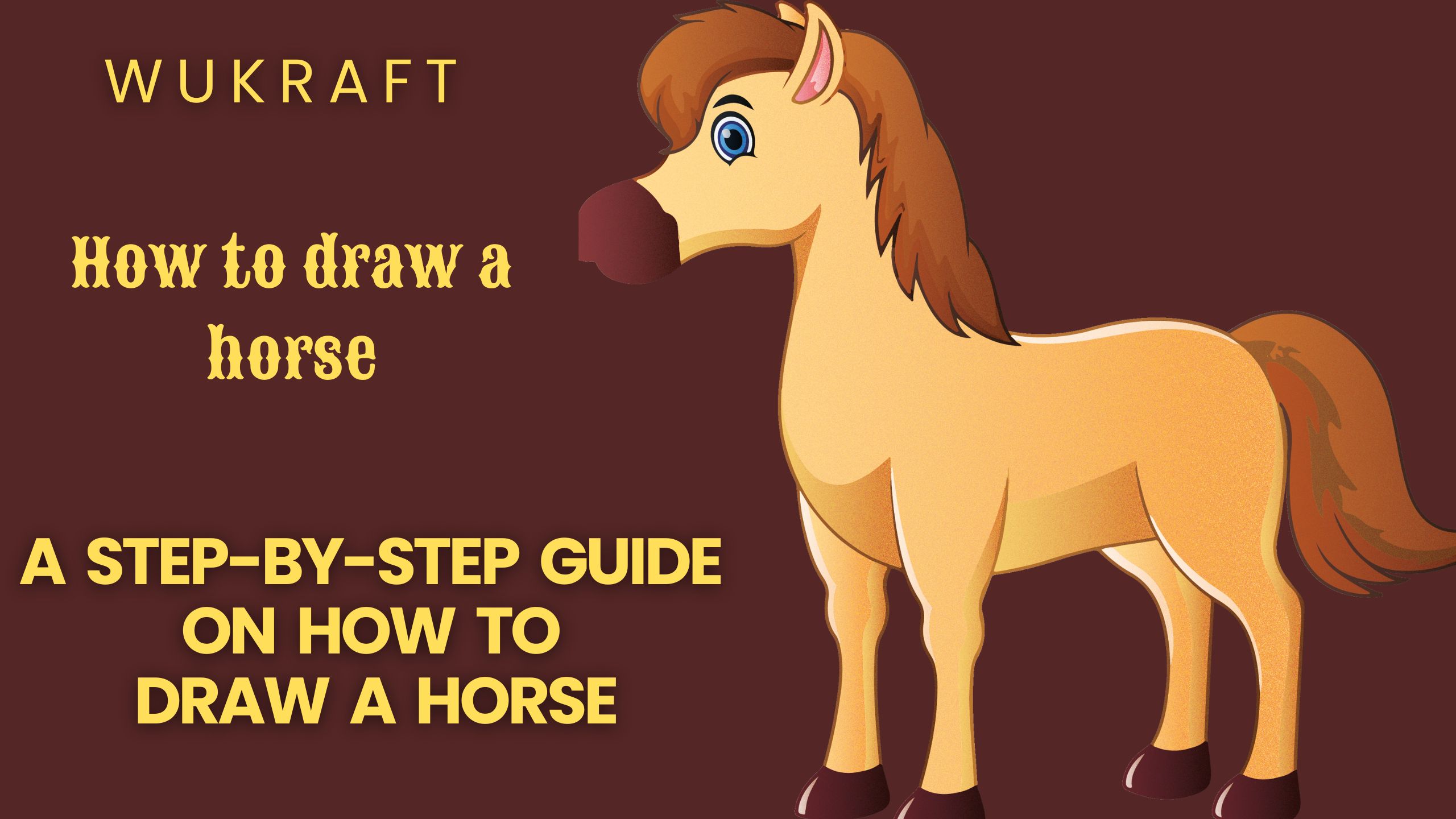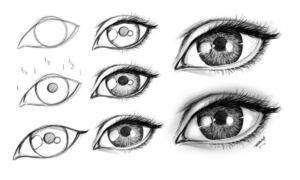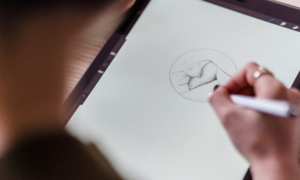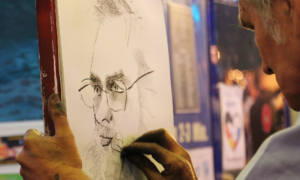The art of drawing allows us to delve into the realms of creativity, observation, and skill, providing a canvas for our imaginations to run free. Among the myriad subjects that artists choose to bring to life on paper, horses stand as timeless symbols of grace, strength, and beauty. In this comprehensive guide, we embark on a journey through the intricacies of drawing a horse, a majestic creature that has captured human fascination for centuries.
Drawing is a wonderful form of self-expression and a great way to tap into your creativity. If you’re passionate about capturing the beauty and grace of animals, particularly horses, you’re in for an exciting artistic journey. In this step-by-step guide, we’ll explore the process of drawing a majestic horse. So, grab your sketchbook, sharpen your pencils, and let’s embark on this artistic adventure together
Materials:
Gather your artistic arsenal before diving into your horse drawing adventure. You’ll need:
- Sketchbook or drawing paper: Choose a high-quality surface that accommodates pencil work.
- Pencils of varying hardness (2H to 6B): A range of pencils allows you to achieve different levels of shading and detailing.
- Eraser: A kneaded eraser is particularly useful for fine-tuning details.
- Drawing board (optional): Provides a stable surface for drawing, especially for larger pieces.
- Reference images: Use photographs or illustrations of horses to guide your drawing and ensure accuracy.
1. Gesture Drawing
Why Gesture Drawing?
Capture Movement and Dynamics:
- Gesture drawing is all about capturing the essence of movement. Horses are dynamic animals, and understanding the flow of their bodies is essential for creating a lifelike representation. Through quick, gestural lines, you can convey the sense of motion, whether it’s a trot, a gallop, or a simple standing pose.
Establish Proportions:
- Starting with a gesture sketch helps you establish the proportions of the horse. It allows you to block in the major shapes of the head, body, and limbs, ensuring that the subsequent details align correctly. This initial step is crucial for maintaining accuracy in your drawing.
Promote Fluidity and Expressiveness:
- Gesture drawing encourages a fluid and expressive approach to sketching. By using broad strokes and avoiding getting bogged down by details initially, you can capture the spirit and energy of the horse. This approach sets a lively tone for the rest of the drawing process.
How to Execute Gesture Drawing for a Horse:
Loose, Quick Strokes:
- Begin with loose, quick strokes to outline the basic shapes of the horse. Use a light touch with your pencil to allow for easy adjustments and modifications as you refine the pose.
Focus on Major Shapes:
- Identify and emphasize the major shapes of the horse’s body, including the head, neck, torso, and limbs. Consider the overall posture and positioning of these elements.
Dynamic Lines:
- Use dynamic lines to convey the direction of the horse’s movement. Pay attention to the curve of the spine, the angle of the legs, and the positioning of the head. This step is about capturing the dynamic gestures that make the horse visually compelling.
Experiment with Poses:
- Don’t be afraid to experiment with different poses during the gesture drawing phase. Explore various stances and movements to find the one that resonates with the mood or story you want to convey in your final drawing.
Maintain Flexibility:
- Keep your drawing flexible at this stage. The goal is not to create a detailed and polished representation but to establish a dynamic and flexible foundation. You’ll refine and add details in subsequent steps.
2. Define the Skeleton and Proportions
Importance of Defining the Skeleton:
Anatomical Accuracy:
- Defining the skeleton allows you to establish the underlying anatomical structure of the horse. This knowledge is essential for achieving a realistic representation, as it ensures that the major bones and joints align correctly.
Proportion Control:
- Proper proportions are vital in creating a lifelike and balanced depiction of a horse. Defining the skeleton helps you establish the correct size and placement of body parts, avoiding distortions that could compromise the realism of your drawing.
Understanding Movement:
- The skeleton is the framework that supports the horse’s movements. By defining the skeletal structure, you gain insights into how the different parts of the body interact during various poses, contributing to a dynamic and natural portrayal.
Preventing Common Mistakes:
- Addressing the skeleton early in the drawing process helps prevent common mistakes related to proportion and anatomy. It serves as a guide for subsequent steps, ensuring that the final result is anatomically sound and visually compelling.
How to Define the Skeleton and Proportions:
Refine Basic Shapes:
- Begin by refining the basic shapes established in the gesture drawing. The circles and ovals representing the head, torso, and limbs can now be developed into more accurate representations of the horse’s anatomy.
Outline the Spine:
- Draw a line to represent the spine, extending from the base of the head to the tail. This line serves as the central axis, providing a reference for the horse’s overall posture and movement.
Define the Limbs:
- Outline the legs, paying close attention to the joints and proportions. Horses have unique limb structures, with elongated bones and powerful muscles. Ensure that the legs are appropriately sized and positioned relative to the body.
Establish the Neck and Tail:
- Define the neck and tail, noting their lengths and curves. The neck of a horse is a distinctive feature, contributing to its overall elegance. The tail should flow naturally from the base of the spine.
Consider Foreshortening:
- If the horse is in a dynamic pose or perspective, consider the principles of foreshortening. This technique involves adjusting the proportions of body parts that are closer to or farther away from the viewer, creating a sense of depth and perspective.
3. Outline the Head and Facial Features
The Significance of the Head:
Expressive Center:
- The head is the most expressive part of a horse, showcasing emotions through subtle details such as the position of the ears, the curve of the mouth, and the depth of the eyes. Capturing these nuances is crucial for bringing your drawing to life.
Identity and Distinctiveness:
- A horse’s head holds unique features that contribute to its individual identity. From the shape of the muzzle to the size and placement of the eyes, these characteristics define the horse and make each drawing distinct.
Connection with the Viewer:
- The head is where the viewer establishes a connection with the subject. Attention to detail in this area invites the observer to empathize with the horse, creating a more engaging and emotionally resonant piece of art.
How to Outline the Head and Facial Features:
Sketch the Basic Shapes:
- Begin by sketching the basic shapes of the head, considering the proportions established in the previous step. Use light, confident lines to define the contours of the forehead, muzzle, and jaw.
Position the Eyes:
- The eyes are crucial in conveying the horse’s emotions. Position them correctly in relation to the head, considering their size and the space between them. Observe your reference images to capture the depth and soulful gaze characteristic of horses.
Define the Ears:
- Pay close attention to the ears, which are key indicators of a horse’s mood. Horses can rotate their ears to express curiosity, alertness, or relaxation. Capture the angle and shape of the ears to convey the intended emotion.
Outline the Muzzle:
- Define the muzzle, considering its length, width, and curvature. Horses have distinct muzzles, and accurately capturing this feature contributes to the overall realism of your drawing. Pay attention to the nostrils and the way they connect to the rest of the face.
Shape the Jaw and Neck Connection:
- Outline the jaw, connecting it smoothly to the neck. Consider the musculature and contours of the jawline, ensuring a seamless transition to the neck. This step adds dimension and structure to the horse’s head.
Add Details to the Mane:
- If your horse has a flowing mane, begin to outline its shape and direction. The mane contributes to the overall movement and energy of the drawing. Consider the length and texture, adjusting your strokes to convey the mane’s flow.
4. Sketch the Legs and Hooves
The Importance of Leg Anatomy:
Structural Foundation:
- The legs form the primary weight-bearing structure of the horse, supporting its powerful body. Understanding the anatomy of the legs is crucial for achieving stability and balance in your drawing.
Contribution to Movement:
- Horses are renowned for their graceful and swift movement. Capturing the details of the legs allows you to convey the dynamic nature of the horse, whether it’s in a static pose or mid-gallop.
Distinctive Features:
- Each part of the leg, from the sturdy thighs to the delicate fetlocks, carries distinctive features that contribute to the horse’s unique appearance. Properly sketching these details adds authenticity to your artwork.
How to Sketch the Legs and Hooves:
Define the Joints:
- Start by outlining the major joints of the legs – the shoulder, knee, hock, and fetlock. Pay attention to their placement and proportion in relation to the rest of the body.
Sketch the Upper Leg:
- Outline the upper part of the leg, known as the forearm or gaskin, depending on the specific part. Consider the musculature and curvature, emphasizing the strength that characterizes the horse’s limbs.
Draw the Lower Leg:
- Extend your sketch to include the lower part of the leg, distinguishing between the cannon bone and the more delicate areas like the pastern. Observe your reference images closely to capture the tapering form of the lower leg.
Define the Hooves:
- Sketch the hooves, paying attention to their size and shape. Horses’ hooves vary, so adapt your sketch to reflect the specific characteristics of the breed or individual you are drawing. Ensure symmetry and proper alignment with the legs.
Add Detail to the Fetlocks:
- If your horse has feathering around the fetlocks, such as in certain breeds like Clydesdales or Shires, add these details to your sketch. These features contribute to the horse’s distinct appearance.
Consider Weight Distribution:
- Horses distribute their weight differently depending on their pose or movement. Capture the sense of weight and balance in your sketch, adjusting the positioning of the legs to reflect the horse’s stance.
5. Add Muscle Definition and Fur Texture
The Significance of Muscles and Fur:
Highlighting Strength:
- Muscles are integral to the horse’s powerful physique. Adding definition to these muscles not only contributes to anatomical accuracy but also emphasizes the strength and vitality of the horse.
Conveying Texture and Depth:
- Fur texture adds a tactile quality to your drawing, creating a sense of depth and realism. The unique patterns and variations in a horse’s coat contribute to its individuality and should be carefully observed and replicated.
Enhancing Realism:
- The combination of well-defined muscles and realistic fur texture breathes life into your drawing. It transforms a two-dimensional image into a vibrant representation that captures the dynamic nature of horses.
How to Add Muscle Definition:
Study Anatomy:
- Before adding muscle definition, take some time to study the anatomy of horses. Understand the placement and form of major muscle groups, including the trapezius, deltoid, and gluteal muscles.
Use Gradual Shading:
- Employ gradual shading techniques to define muscles. Lightly shade the areas where muscles are located, gradually increasing the pressure on your pencil to create depth and dimension.
Emphasize Tension Points:
- Identify tension points in the muscles, such as areas where the skin tightens over a muscle group or where muscles connect to joints. Emphasizing these points adds realism to your drawing.
Consider Light Source:
- Pay attention to the direction of light in your reference image. Shade the muscles accordingly to create highlights and shadows, enhancing the three-dimensional quality of your drawing.
How to Add Fur Texture:
Start with Light Outlines:
- Begin by lightly outlining the general direction of the fur using short, controlled strokes. This provides a framework for building up texture.
Vary Stroke Length and Direction:
- Horses have different types of fur, ranging from short and sleek to long and flowing. Vary the length and direction of your strokes to capture the specific texture of the horse’s coat.
Use Hatching and Cross-Hatching:
- Hatching and cross-hatching techniques are effective for creating the appearance of fur. These methods involve drawing parallel lines or intersecting lines to simulate the texture of hair.
Consider Fur Patterns:
- Observe the patterns in the horse’s fur, especially around areas like the mane and tail. Different breeds and individual horses may have distinct patterns that contribute to their overall appearance.
Build Layers:
- Layering is key to achieving a realistic fur texture. Gradually build up layers of short strokes, paying attention to areas where the fur is denser or longer.
6. Refine Facial Details and Expression
The Significance of Facial Details:
Eyes as Windows to the Soul:
- The eyes are perhaps the most expressive feature in a horse’s face. They convey depth, emotion, and a window into the horse’s soul. Refining these details enhances the overall realism and impact of your drawing.
Ear Placement and Movement:
- Horses communicate through the movement and positioning of their ears. Refining the details of the ears adds authenticity to your drawing, allowing you to convey the horse’s mood and attentiveness.
Mouth and Nostrils:
- Paying attention to the shape of the mouth and the position of the nostrils contributes to the overall expression of the horse. Whether capturing a gentle nuzzle or a spirited neigh, these details add life and character to your artwork.
How to Refine Facial Details:
Focus on the Eyes:
- Start by refining the details of the eyes. Add depth by shading the irises and pupils, considering the catchlights to enhance the sparkle. Pay attention to the shape of the eye, as it significantly influences the horse’s expression.
Fine-Tune Eyelashes and Eyebrows:
- If applicable, add fine details such as eyelashes and eyebrows. These subtle features contribute to the realism of the eyes and accentuate the horse’s expressive gaze.
Define the Eyelids:
- Outline and define the upper and lower eyelids to create a sense of volume. Consider the curvature of the eyelids and how they interact with the eyeball.
Capture Ear Movements:
- Horses communicate their mood through ear movements. Refine the shape and positioning of the ears, considering factors such as their rotation and the direction in which they point. Ears perked forward convey curiosity or alertness, while ears laid back might indicate aggression or relaxation.
Shape the Nostrils and Mouth:
- Pay close attention to the shape and size of the nostrils. Detailing the nostrils adds realism to the horse’s breathing and contributes to the overall expression. Define the mouth, adding details to the lips and capturing any specific expressions, such as a gentle nip or a relaxed grazing posture.
Capture Fine Facial Hairs:
- Consider adding fine facial hairs to areas like the muzzle and around the eyes. These subtle details add texture and contribute to the natural appearance of the horse’s face.
7. Shading and Highlights
The Significance of Shading and Highlights:
Creating Realism:
- Shading mimics the way light interacts with the surfaces of the horse, adding realism to your drawing. By understanding the play of light and shadow, you can create a convincing illusion of depth and form.
Emphasizing Form and Structure:
- Shading allows you to emphasize the three-dimensional form of the horse, accentuating muscles, fur texture, and facial features. It contributes to the overall structure and solidity of the drawing.
Conveying Mood:
- The strategic use of shading can convey mood and atmosphere in your artwork. Shadows can evoke a sense of drama, while highlights add a touch of vitality and brightness.
How to Shade and Add Highlights:
Determine Light Source:
- Identify the direction of your light source. Consistency in the direction of light ensures that shadows fall naturally and highlights are appropriately placed. This decision guides the entire shading process.
Establish Shadows:
- Begin by shading the areas of the horse that receive less direct light. This includes the undersides of the body, the spaces between muscles, and areas obscured by the mane. Use varying pressure on your pencil to create gradations in shading.
Layering for Depth:
- Build up layers of shading gradually. Layering allows you to control the intensity of shadows and create a smooth transition between light and dark areas. Experiment with different pencil grades for varying levels of darkness.
Define Muscle Structure:
- Use shading to define the muscles and contours of the horse. Darken the areas where muscles contract and create shadows, emphasizing the strength and power inherent in the horse’s physique.
Add Fur Texture:
- Enhance the fur texture by strategically shading the areas between individual hairs. Vary the length and direction of your strokes to simulate the patterns and flow of the horse’s coat.
Create Highlights:
- Identify the areas that catch the most light, such as the top of the muzzle, the tips of the ears, and the crest of the neck. Use an eraser or leave these areas unshaded to create highlights that add luminosity and dimension.
Consider Reflective Light:
- Take into account reflective light that may bounce back onto the horse from nearby surfaces. This can soften shadows and add an extra layer of complexity to your shading.
Learn more about how to draw a horse…
If you’re eager to continue your artistic exploration and want to further hone your skills in drawing horses, you’re in for a treat! We have another detailed and comprehensive blog dedicated specifically to the art of drawing horses. In this additional resource, we delve even deeper into the intricacies of capturing the majestic beauty, grace, and strength that define these magnificent creatures.
Watch this tutorial to know more about how to draw a horse:
Conclusion
As we reach the culmination of our artistic journey, the process of drawing a horse unfolds as a rich tapestry of skill, observation, and creativity. Through each step, from the initial gesture drawing to the final touches of shading and highlighting, we’ve embarked on a quest to capture the essence of these majestic creatures on paper.
Mastering the art of drawing horses is not just about technical proficiency; it’s an exploration of the profound bond between artist and subject. Each stroke, from the initial sketch to the final shading, is an opportunity to convey the timeless beauty, strength, and elegance of these incredible beings.
As you stand back and admire your completed horse drawing, take pride in the journey you’ve undertaken. Whether you’re a seasoned artist refining your skills or a novice discovering the joy of drawing, remember that each stroke is a step toward unlocking the magic of artistic expression.
Our exploration doesn’t end here. For those hungry for more artistic challenges, we offer additional resources, including an advanced guide that delves deeper into techniques, breeds, and styles. Whether horses remain your focal point or you’re drawn to new horizons like our blog on drawing dogs, the world of artistic possibilities is vast and waiting for your creative touch.
So, with pencil in hand and inspiration in your heart, continue to explore, create, and bring your artistic visions to life. The journey of drawing horses is not just about the finished artwork; it’s about the growth, passion, and joy that accompany every stroke on the canvas of your imagination. Happy drawing!




